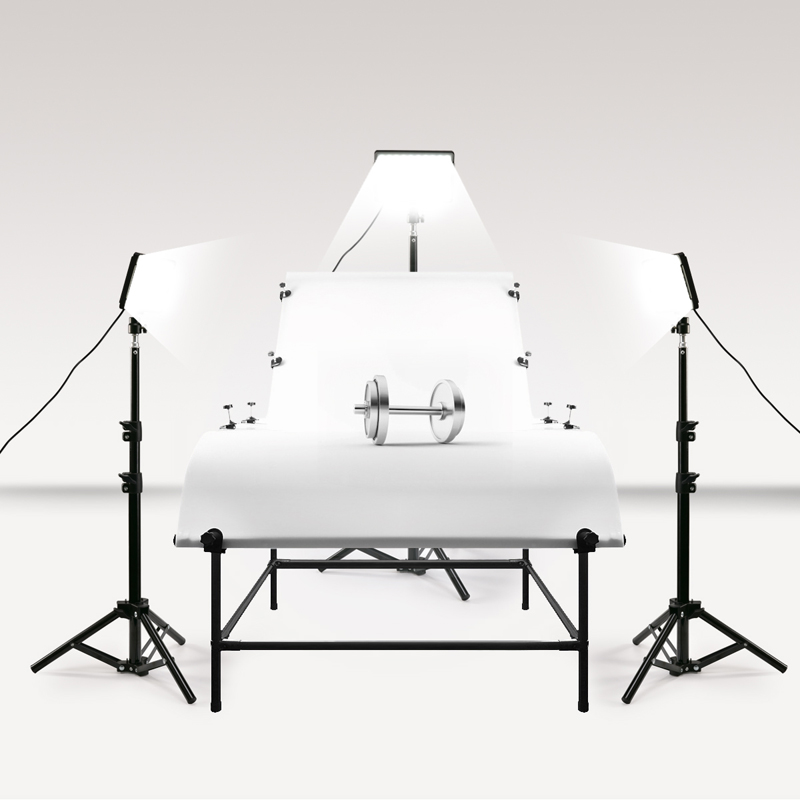How to set up light is an important part of the studio lighting. The studio also has great requirements for lighting during the shooting process. Professional lighting engineers can debug and beautify the lighting to achieve a better picture effect. Today, I will let you know about the lighting arrangement of the studio.
The lighting layout of the studio must first determine the area of the studio. Generally speaking, large studios above 300 square meters, medium-sized studios between 100 and 300 square meters, and small studios below 100 square meters. Secondly, the lighting technique should be selected according to the type of studio, such as virtual studio, real studio, interview studio, panoramic studio, etc. The lighting configuration methods are different. Generally, the main light source is designed in front of the camera in the lighting of the studio, because the light is projected on the subject. The lamp position is adjusted on-site according to the appearance characteristics of the character. For example, if the facial contour of the character is not obvious, the lamp position can be appropriately raised to make the eyes, nose, and jaw of the character appear a certain shadow, and increase the facial texture of the character. If the character’s face is thin, the key light layout should be lowered appropriately.
Several common lighting methods
1. Three-point lighting:
The three-point lighting is composed of three parts: main light, backlight, and auxiliary light to express the theme. The position of the backlight can be changed at will. The backlight can be a light on the front and back, or one or two backlights on the side and back.
2. Multi-primary lighting:
Multi-primary light distribution can show the main light source to various positions of the camera.
3. Soft front light:
First use lights to brighten the studio area to avoid underexposure. The TV studio lighting uses a soft frontal lighting method to shoot the characters clearly, but the effect is relatively flat. If the soft light is projected from one side instead of the balanced distribution of full lighting, the basic shape of the characters will be improved. Adding back light lighting will increase the character shape, especially when shooting from an oblique angle, this effect is very obvious.
4. Side main light:
Use the side main light and the hard light from both sides of the set to provide the side main light and the side backlight, and the auxiliary light comes from the front of the set.
5. Overall lighting:
For the overall lighting, the basic lighting is first (called universal illuminance in TV, this illuminance is 800~1500lx) so that the color of the camera can be basically reproduced, and then three-point lighting (multiple main light, multiple backlight, multiple auxiliary Light). The illuminance of multiple main lights should be consistent, as are the backlight and auxiliary lights. Similarly, the tones of the images captured by the camera at the designated location should be basically the same.
6. Hierarchical lighting:
Hierarchical lighting, the studio’s music and song and dance programs use hierarchical lighting, also known as zone lighting. This lighting method can enhance the subject and perspective. Hierarchical lighting can be divided into front area, middle area and back area. The illuminance of these three areas is different. The illuminance of the front area should be 2000~2500lx, the illuminance of the middle area should be 1500~2000lx, and the illuminance of the back area should be At 800~1000lx, the illuminance of sky curtain light should be 600~800lx. The purpose of zone lighting is to give people a sense of hierarchy and three-dimensionality.
7. Indoor daytime scene lighting:
For indoor daytime lighting, strong light should be used to project the shadow of the window into the room to replace the effect of sunlight. The direction of the main light should be consistent with the direction of the sunlight to make the picture effect more realistic. The position of the auxiliary light should be at 70° to the camera, which can eliminate the long nose shadow of the character. It is advisable to use LED film and television flat light for the scene light, the light is soft and uniform, so that the scene shows a hierarchy.
8. Indoor night lighting:
Indoor night scene lighting, generally use chandeliers to illuminate the entire room, desk lamps to illuminate desks, and wall lamps to illuminate a part of the room. These kinds of lamps are good for expressing the light effect of the environment and the characters. The best way to express the atmosphere of the indoor night scene is to turn on and off the lights. The audience is very sensitive to know that it is night. To deal with the light of turning on and off the lights, first the light when the lights are turned off, and then the light after turning on the lights. The light when the light is turned off is darker than the light when the light is turned on. The room appears dark but it can make people see the outline.
Post time: Feb-24-2021 BACK




